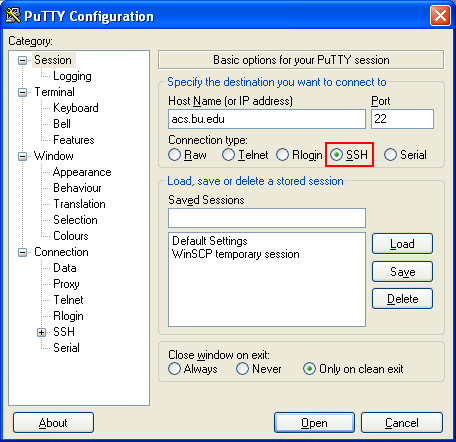

- #Putty ssh private key how to
- #Putty ssh private key install
- #Putty ssh private key generator
- #Putty ssh private key software
- #Putty ssh private key download
On the remote SSH server, in your home directory, create a. To get your public SSH to the server and enable password-less login, you will have to manually create an authorized_keys file on the remote server and paste the puvblic key into it. However, Windows doesn’t have ssh-copy-id tool installed. On Unix-like systems, ssh-copy-id is a tool for copying SSH keys to the server. Now that you’ve generated your SSH key pair, you will want to copy your public key to the SSH server.
#Putty ssh private key how to
How to copy your public key to the SSH server with Windows 11 click Yes.īoth the public_key and private_key files should be saved at the location specified. When saving the private key, you’ll be prompted with a message that you’re saving the private key without passphrase. In most cases, you’ll want to save your key pair in your home folder, usually at the path below. So continue moving the cursor until the process is complete.Īfter the keys are generated, add a descriptive Key comment to help you easily identify your key and Save both keys ( Public and Private keys) to a secure location. When you stop the cursor, the process will also stop.
#Putty ssh private key generator
When the app opens, click the Generate button, then move the cursor randomly on the Putty Key Generator field window to begin generating the key pair. Once the file is downloaded to your Downloads folder, browse and double-click to open the app.
#Putty ssh private key download
On the same download page above, scroll down the page and click the puttygen.exe link to download the app. How to generate PuTTY SSH Key pair in Windows 11īefore you can generate a PuTTY key pair, you must download PuTTYgen (key generator) app. On the screen below, choose to Add shortcut to PuTTY on the Desktop, then click Install.
#Putty ssh private key install
Add your public key to existing Droplets to use SSH key authentication to log in to them.In your Downloads folder, double-click the downloaded installer to initiate the install process.įollow the installer wizard until complete.Add your public key to your DigitalOcean account to be able to embed it in new Droplets on creation.Now that you have your generated key pair saved on your computer and ready to use, you can: The public key is redisplayed again in the appropriate format.

Navigate to the private key in your file system and select it.Next to Load an existing private key file, click the Load button.If you need to see the public key in the right format after the private key has been saved: You can click Save public key as well, but take note: The format PuTTYGen uses when it saves the public key is incompatible with the OpenSSH authorized_keys files used for SSH key authentication on Linux servers. We strongly recommend using a passphrase, but you can press ENTER to bypass this prompt. If you have not entered a passphrase, you will be asked to confirm that you want to save the key without one. You can name your key whatever you’d like, and the extension. When you’re done, click the Save private key button and select a secure location to keep it.
#Putty ssh private key software
You’ll need to provide your passphrase every time you use this key (unless you use SSH agent software that stores the decrypted key). This improves security by preventing someone who gains access to your private key from using it without also knowing the passphrase. Next, you’ll be prompted to enter a passphrase for your SSH key. Be sure to scroll within the text area so you copy the entire key. Copy this into your clipboard now if you plan to add it to your DigitalOcean account or to servers. When the key is generated, you’ll see the public key displayed in a text box.

This randomness, known as entropy, is used to create keys in a secure fashion so that other people can’t reproduce them. You might be prompted to “generate some randomness by moving the mouse over the blank area”. When you’re ready, click the Generate button on the right-hand side. However, Fedora 33’s new encryption requirements will not accept the default RSA algorithm, so choose ECDSA or another supported algorithm when creating a key for use with Fedora 33. You can customize the Parameters at the bottom if you like, but the default values are appropriate in most situations. The key generation program looks similar to this: Next, install it on your local computer by double clicking it and using the installation wizard.Īfter the programs are installed, start the PuTTYgen program through your Start Menu or by tapping the Windows key and typing puttygen. msi file in the Package files section at the top of the page, under MSI (‘Windows Installer’). To create and use SSH keys on Windows, you need to download and install both PuTTY, the utility used to connect to remote servers through SSH, and PuTTYgen, a utility used to create SSH keys.


 0 kommentar(er)
0 kommentar(er)
